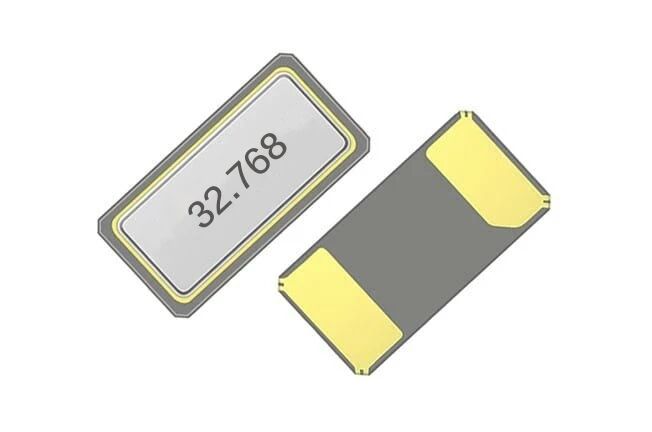Why Do Clocks Use 32.768KHz Crystal Oscillators?
The 32.768kHz frequency is widely used in circuit design. Through simple frequency division, this frequency can be easily converted into various commonly used time references. For example, 15 times of binary division on it via a suitable circuit can accurately generate a 1Hz signal, which is crucial for implementing second-based timing functions. Additionally, crystal oscillators with this frequency offer high stability, maintaining relatively stable output under different environmental conditions. This provides accurate and reliable clock signals for circuits, meeting the needs of applications requiring high time precision such as Real-Time Clocks (RTC).

1. Introduction to 32.768KHz Crystal Oscillators
32.768kHz is a standard frequency. The key parameters for crystal oscillators of this frequency mainly include size, load capacitance, frequency deviation, and application scope. By size and form factor, they are divided into through-hole and surface-mount types:
- Through-hole types mainly include models like 26, 38, and 49s.
- Surface-mount types have various models. Depending on the design requirements of different companies, they are widely used in electricity meters, water meters, gas meters, heat meters, industrial control instruments, and more.
2. Why Do Clocks Use 32.768KHz Crystal Oscillators?
Microcontrollers have multiple options for external crystal oscillators, so why do clock crystal oscillators always use 32.768kHz?
Clock frequency is a critical concept. If a system uses an external crystal oscillator, it can obtain other clock frequencies through two methods—frequency multiplication or division—based on this external oscillator.
In clock systems, the “second” is an important time unit, and 1 second corresponds exactly to a 1Hz signal. To improve time precision, this 1Hz signal must be accurate.
As we know, there are only two states (0 and 1) in the digital world. Let’s look at this calculation:2¹⁵ = 32768 = 32.768kHz
The 15th power of 2 equals 32768. Conversely, 15 times of frequency division on a 32.768kHz clock frequency will yield a 1Hz signal exactly.
3. Characteristics of 32.768KHz Crystal Oscillators
- Frequency Stability: Leveraging the physical properties of quartz crystals, the frequency accuracy is typically within ±20ppm (parts per million), with high-precision models reaching ±5ppm.
- Frequency Division Performance: With a frequency of 32,768Hz (2¹⁵), it can directly generate a 1Hz signal via binary division circuits, making it widely used in timing scenarios like clocks and electronic devices.
- Package Types: Includes through-hole (e.g., 2×6mm, 3×8mm) and surface-mount (e.g., 49SMD, DST310S) forms to meet different circuit design needs.
- Temperature Range: The typical operating temperature ranges from -40°C to +85°C, with some high-end models supporting a wider temperature range.
- Low Power Consumption: The typical power consumption is only 0.5μA to 5μA, making it suitable for battery-powered devices such as smart watches and IoT devices.
- Size Advantage: Features a miniaturized design, adapting to the space requirements of high-end electronic products.
If you need to adjust the translation style (e.g., more concise for a product datasheet or more detailed for a technical manual), or add translations for additional technical terms related to crystal oscillators, let me know. I can also help organize this content into a standard English technical document format for easier use in reports or product materials.







